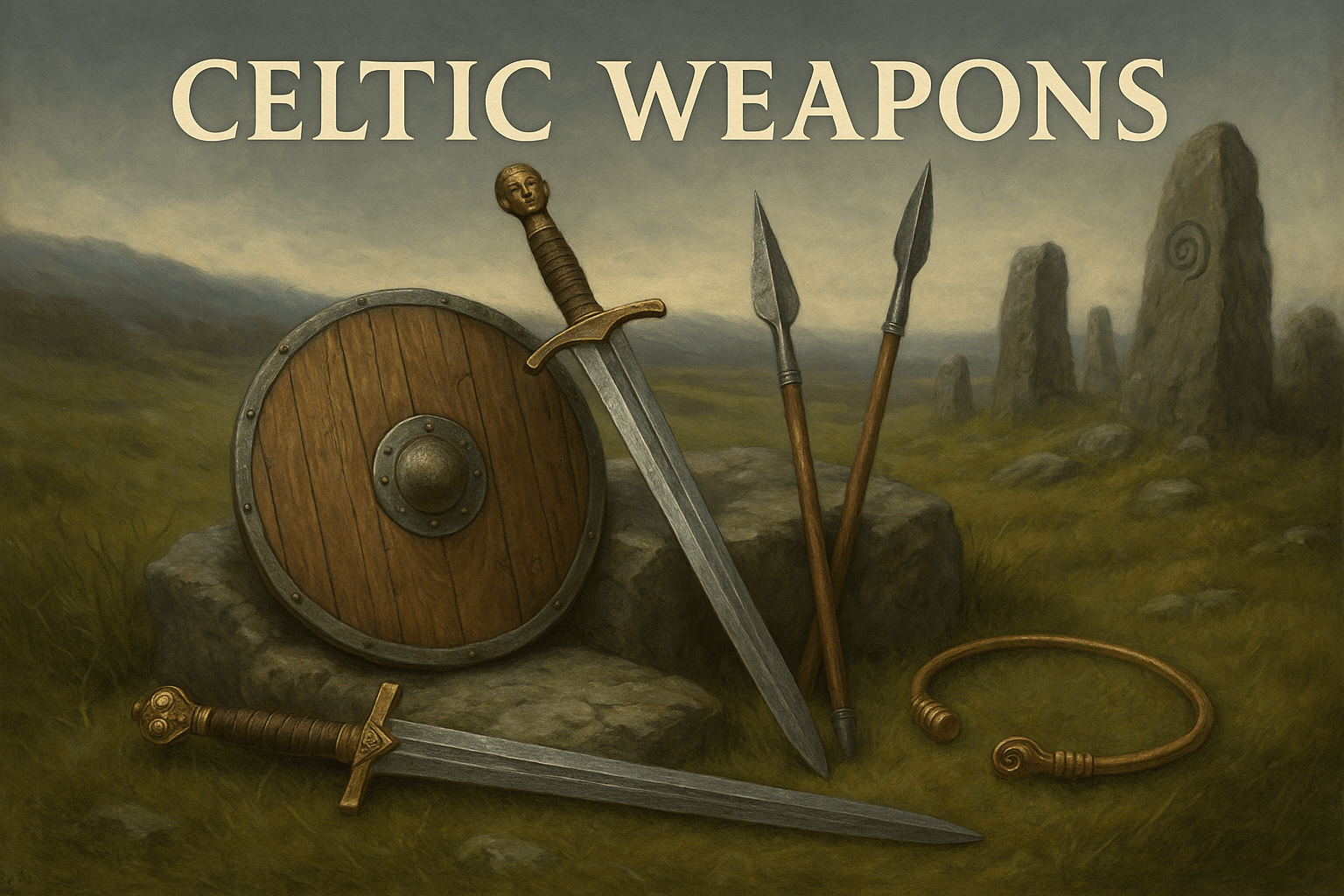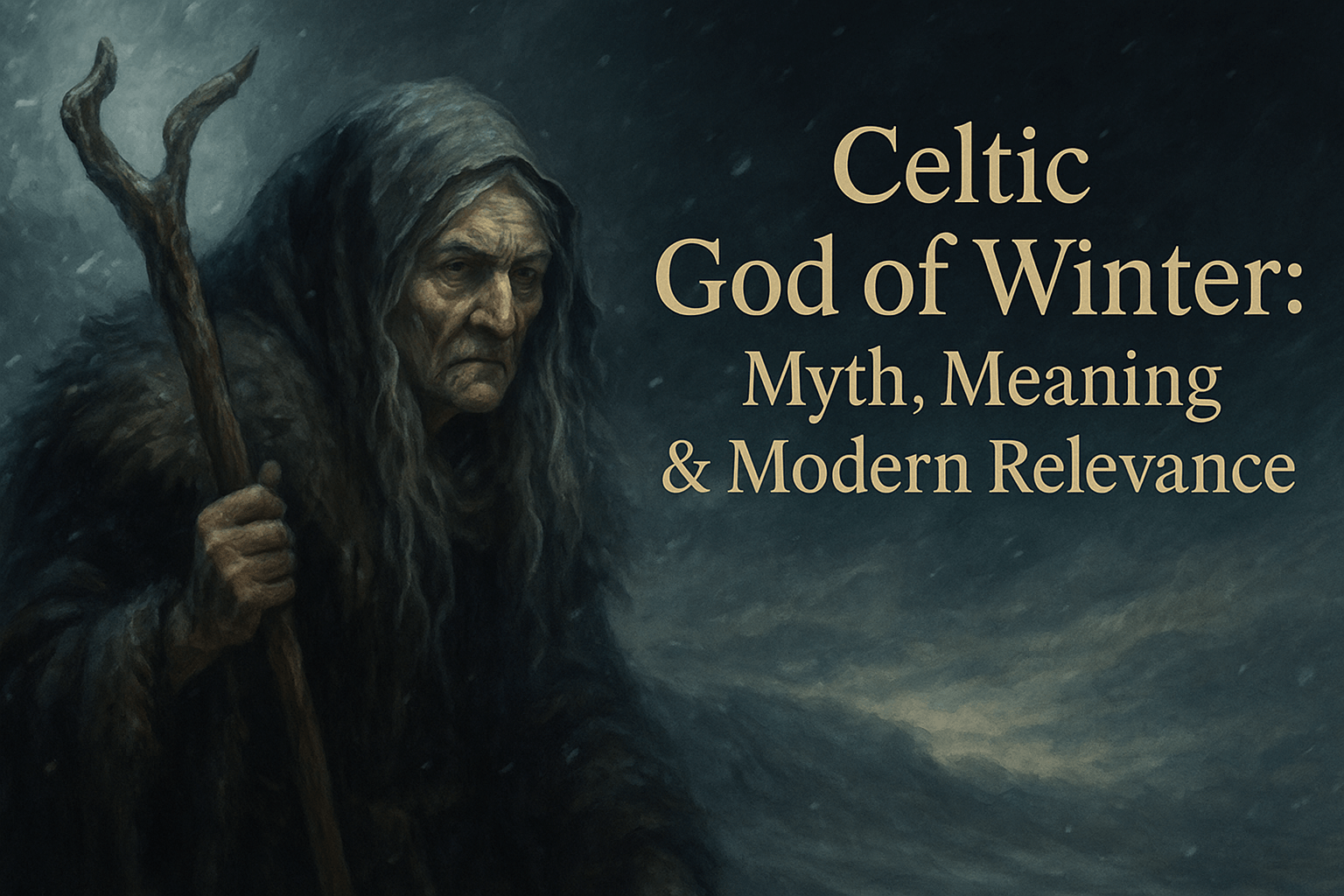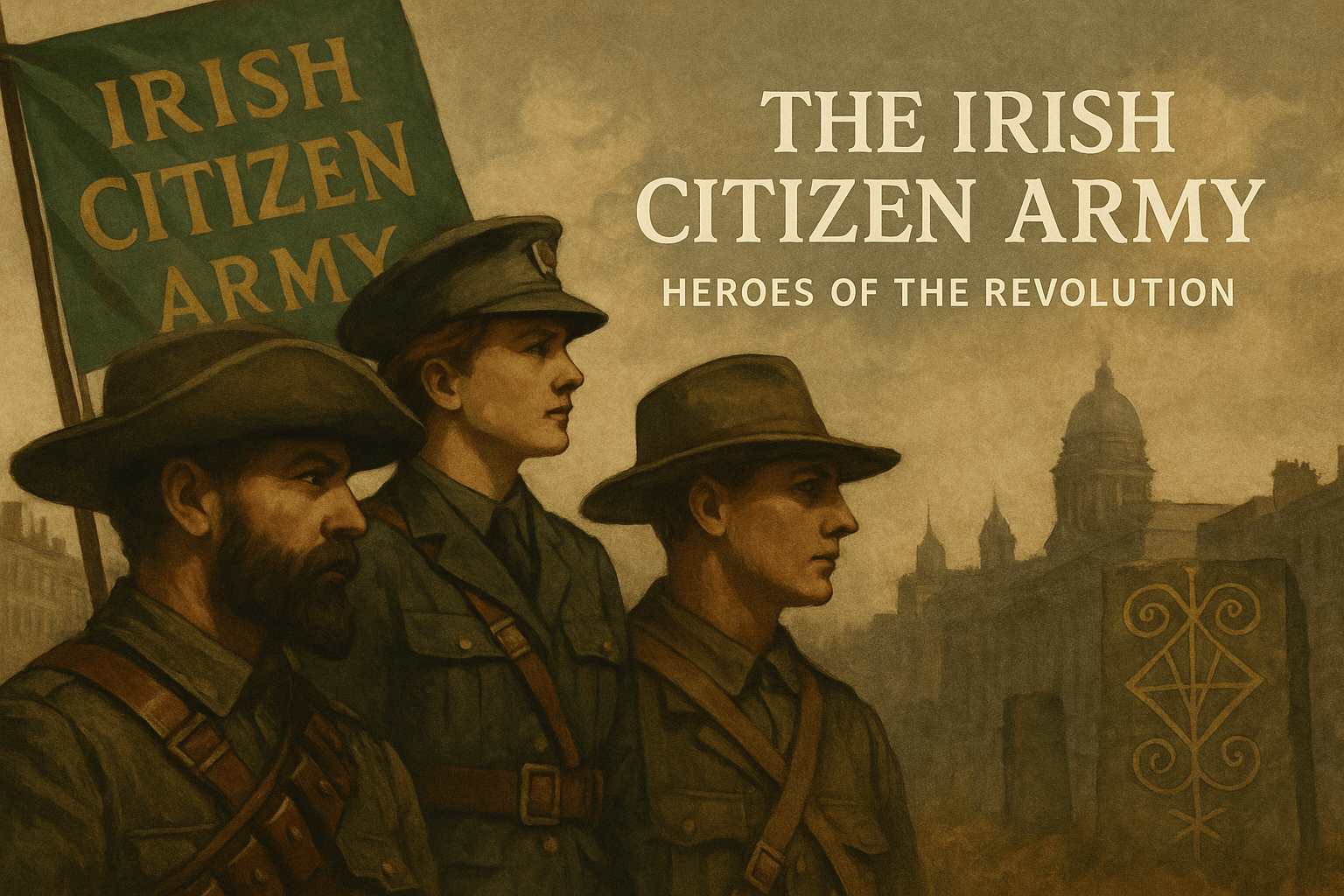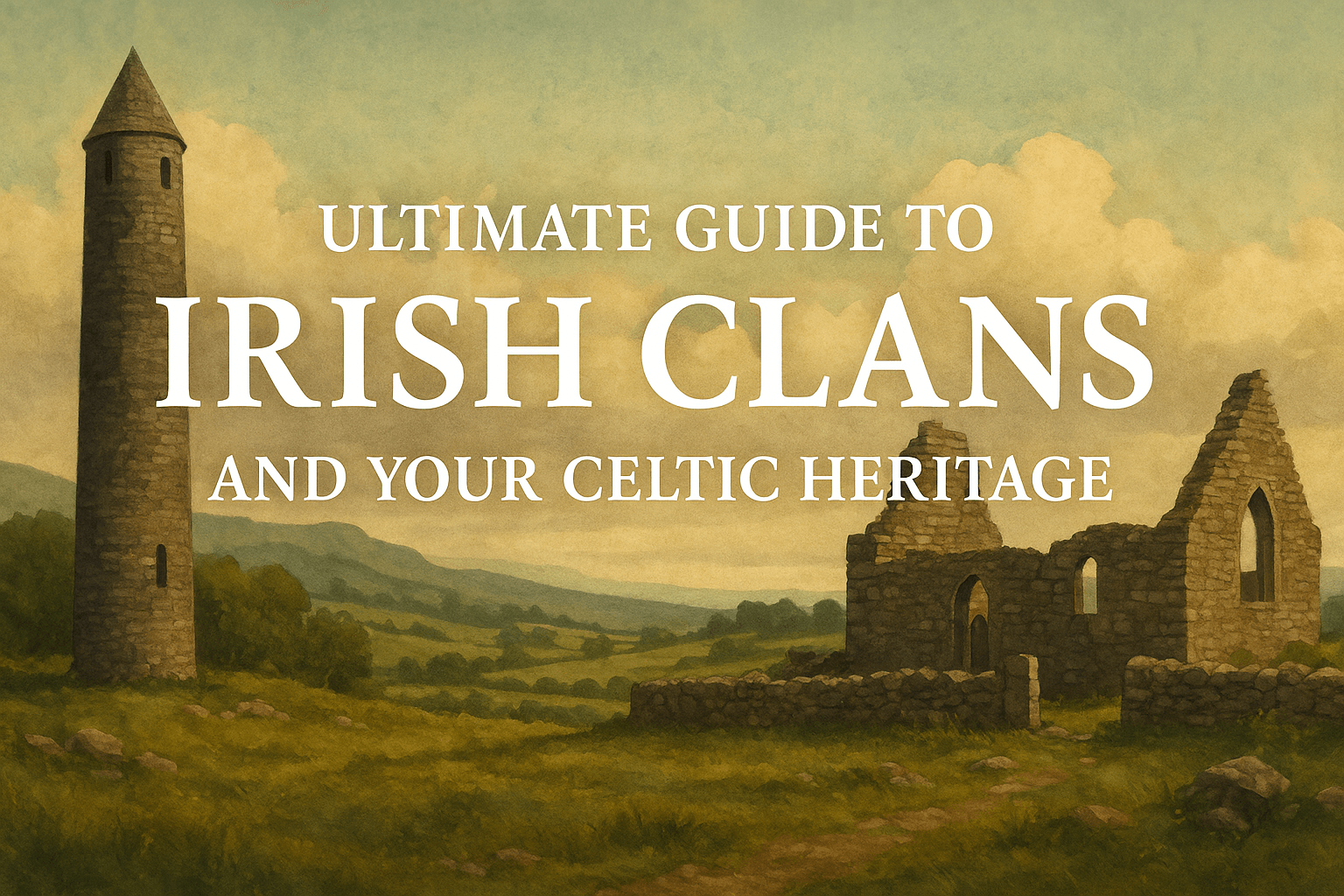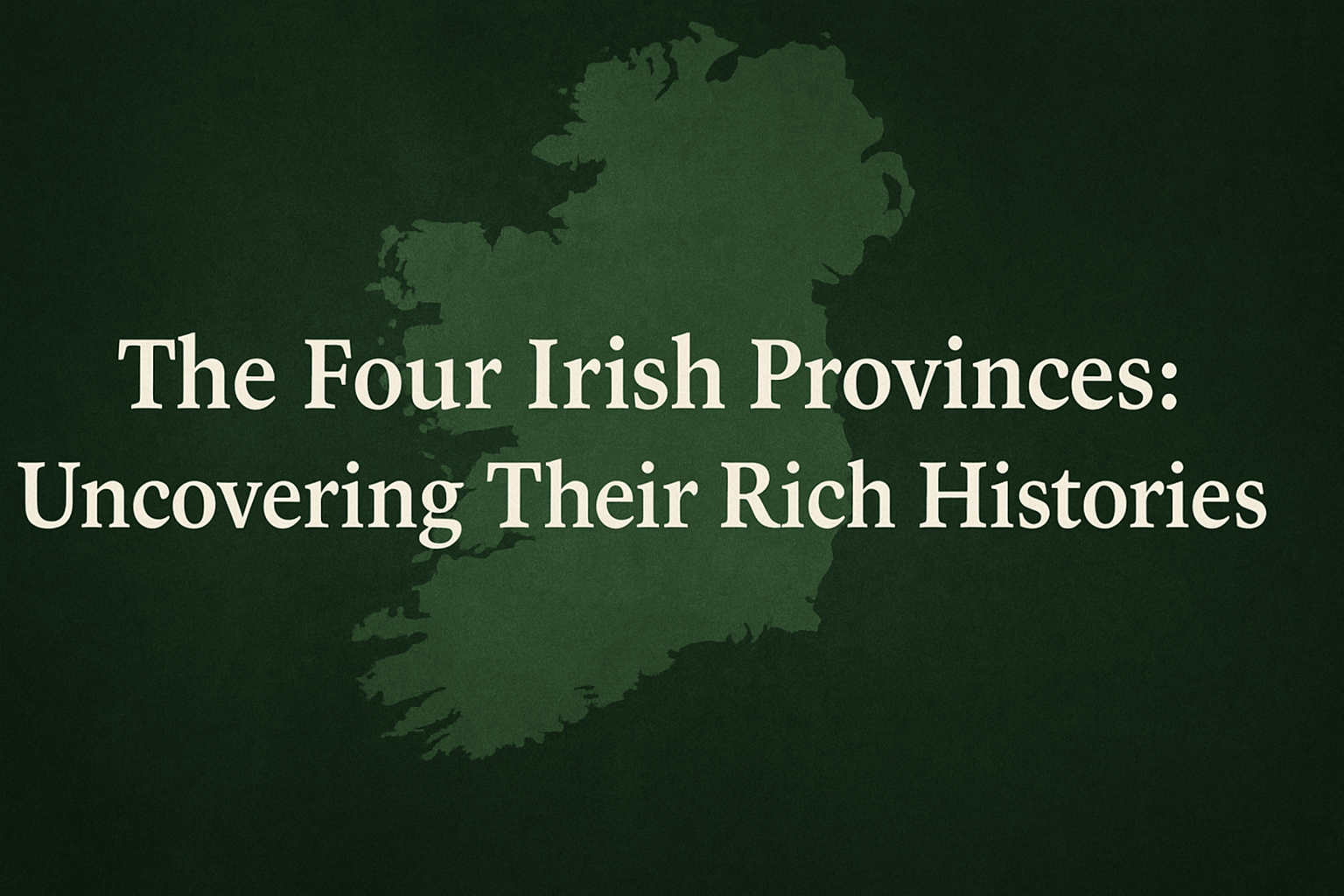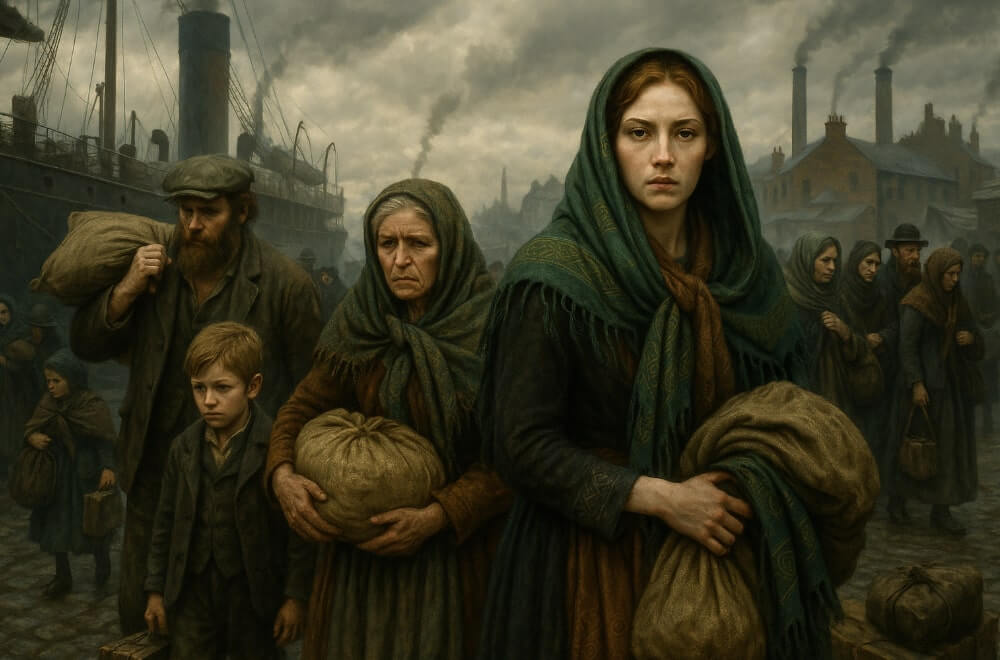Celtic weapons carry with them the legacy of ancient warriors, mythological heroes, and a culture steeped in symbolism and strength. These tools of battle were more than mere instruments of war; they were extensions of the Celtic spirit, deeply rooted in both historical reality and mythic tradition. From swords and spears to druidic ceremonial items, the diversity and symbolism of Celtic weapons offer a fascinating window into Celtic life. In this guide, we explore the origins, uses, evolution, and cultural significance of these weapons across Ireland, Scotland, and the wider Celtic world.
1. Ancient Celtic Weapons
Swords
Swords were status symbols among the Celts. Forged with iron and often adorned with intricate patterns, Celtic swords were designed for slashing rather than stabbing. The craftsmanship often included decorative hilts shaped like animals or gods, a testament to the spiritual and social significance of the blade.
Spears and Javelins
Spears were among the most common weapons used by Celtic warriors. Lightweight and easy to produce, they could be used in close combat or thrown from a distance. Javelins, in particular, were ideal for quick attacks and were often carried in multiples during battle.
Shields
Celtic shields were crafted from wood, often reinforced with iron or bronze. They were not just protective gear but also a canvas for clan symbols and religious imagery. Circular or oval in shape, these shields allowed for quick, agile defense.
2. Irish Celtic Weapons
Irish Celtic warriors wielded weapons that reflected the unique spirit and mythology of Ireland. Some of the most famous Irish heroes, such as Cúchulainn, are depicted in tales with magical and deadly weapons like the Gáe Bulg, a barbed spear with supernatural properties.
Unique Features
- Use of bog iron for weapon-making
- Decorated pommels and carved designs
- Integration of ogham script into the blade or hilt for magical protection
Mythological References
Irish mythology is rich with stories of enchanted swords and spears passed down by gods or discovered in sacred lakes. These tales reinforced the belief that weapons were sacred and sometimes had minds of their own.
3. Scottish Celtic Weapons
Scottish Celtic warriors contributed their own distinctive weapons to the Celtic tradition. The claymore, a large two-handed sword, and the dirk, a long dagger, became iconic symbols of Scottish martial identity.
Notable Features
- Claymores often featured a cross-hilt
- The dirk was commonly worn with Highland dress
- Targe (small round shield) was often used with the dirk in battle
These weapons were both functional and ceremonial, often passed down through generations as heirlooms of warrior families.
4. Druidic Weapons in Celtic Culture
Though druids were spiritual leaders rather than warriors, they are often associated with ceremonial weapons. These tools symbolized authority and connection to the divine, not necessarily combat.
Druidic Armaments
- Ritual staffs adorned with carvings and sacred symbols
- Ceremonial daggers used in rites and oaths
- Stone tools associated with nature magic and healing
These items helped cement the druids’ role as keepers of wisdom and guides in both warfare and peace.
The Evolution and Preservation of Celtic Weaponry
Celtic weaponry evolved with the times, absorbing influences from Roman and Viking invaders. Over centuries, designs changed to incorporate new materials and tactics, yet retained distinct Celtic aesthetics.
Evolution Over Time
- Bronze Age tools transformed into iron weapons
- Transition from tribal to feudal warfare tactics
- Influence of Christian symbolism in later weapons
Preservation Efforts
Today, many Celtic weapons are preserved in museums across Ireland and the UK. Archaeological efforts continue to unearth beautifully preserved pieces in bogs, burial sites, and ancient forts.
For those interested in preserving the language and stories tied to these ancient tools, learning the Irish language is a great place to start. Our Guide to Learning Gaelic can connect you to the world that forged these weapons.
Conclusion
The study of Celtic weapons is more than a journey through steel and wood—it is a way to understand the heart of Celtic culture. From the fierce Irish warriors to the wise druids and the mighty Scottish clans, each blade and spear carries a tale.
By exploring the historical, mythological, and spiritual dimensions of Celtic weaponry, we gain not only knowledge but a deeper appreciation for the legacy of the Celts. If you’re inspired to learn more about Ireland’s rich cultural heritage, including its language and storytelling traditions, consider signing up for a free trial of Gaeilgeoir AI. Our tools can guide you through the language that shaped these myths and preserved these powerful traditions.
External Resource: For more in-depth information on Celtic artifacts and weapons, visit The National Museum of Ireland.
